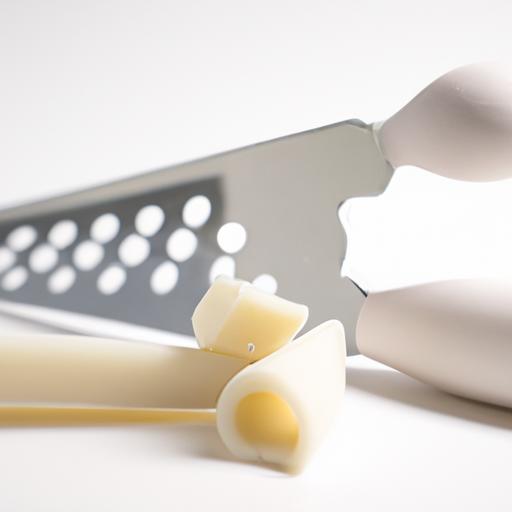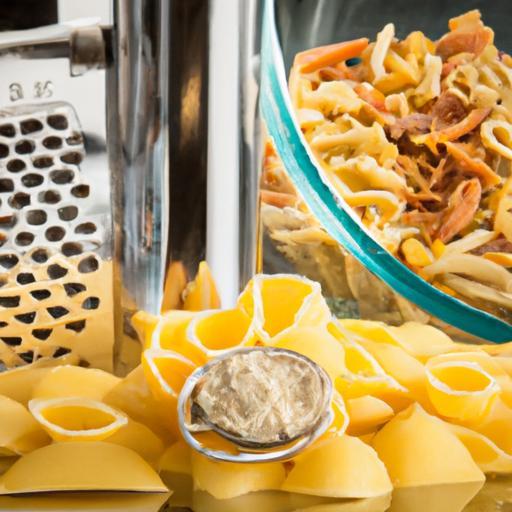Step inside the heart of a pasta maker, where simple ingredients transform into delicate ribbons of culinary art. Behind the scenes, a symphony of rollers and cutters hums with precision, shaping dough into endless possibilities of texture and form. This intricate dance between machinery and craftsmanship unlocks the secrets of pasta perfection-each twist and slice a testament to engineering and tradition intertwining. Join us as we unravel the elegant mechanics that turn flour and water into strands of edible poetry, revealing how rollers and cutters craft perfection from the inside out.
Inside the Pasta Maker: How Rollers and Cutters Craft Perfection
Inside the pasta maker: how rollers and cutters craft perfection is a journey into the precision and passion behind every sheet of fresh pasta. Whether you’re rolling delicate fettuccine or sturdy ravioli dough, understanding the science of dough thickness and the art of cutting shapes with the right blades transforms homemade pasta into a culinary masterpiece. This guide explores these foundational skills and offers expert tips to make your pasta maker an indispensable tool in your kitchen.
Prep and Cook Time
Prep Time: 20 minutes
Cook Time: 4 minutes (boiling)
Yield
Serves 4 generous portions
Difficulty Level
Medium – Ideal for home cooks ready to embrace hands-on pasta making
Ingredients
- 2 cups all-purpose flour, sifted
- 3 large eggs, room temperature
- 1 tsp olive oil
- 1/2 tsp fine salt
- Semolina flour (for dusting)
Instructions
- Make the dough: Mound the flour on a clean surface, creating a well in the center. Crack the eggs into the well, add salt and olive oil. Slowly incorporate the flour into eggs using a fork until dough begins to form.
- Knead thoroughly: Knead the dough for 10 minutes until smooth and elastic. Cover with a damp cloth and rest for 30 minutes. Resting relaxes gluten, essential for even rolling.
- Prepare the pasta maker: Attach roller and cutter attachments. Start with the widest roller setting. Lightly dust the dough with semolina flour to prevent sticking.
- Roll in stages: Flatten the dough into a rectangle, then feed it through the rollers on the widest setting. Fold the dough and roll again, repeating 3-4 times for smooth consistency.
- Adjust thickness carefully: Gradually decrease roller thickness one notch at a time. When dough begins to feel silky and translucent, it’s ready for cutting. Consistency here ensures perfect cooking and texture inside the pasta maker.
- Choose your cutter: For ribbons like fettuccine, attach the wide blade. For tagliolini, swap to the thinner cutter. Feed the perfectly rolled dough sheets through, dusting with semolina to separate strands.
- Cook immediately or dry: Drop fresh pasta into boiling salted water. Cook for 2-4 minutes until al dente. Or lay strands flat on a drying rack to store for later use.
- Clean your pasta maker: After use, wipe down rollers and cutters with a dry brush or cloth. Avoid water to protect metal parts and prevent rust.
Chef’s Notes: Tips for Success
- Precision rolling is key to achieving uniform dough thickness. Skipping incremental roller adjustments can lead to uneven cooking textures.
- Flour smart: Semolina flour is preferred for dusting because it’s coarse and won’t get absorbed by the dough, preventing sticky layers and clumping.
- If your dough is sticky, add flour sparingly during kneading. Too much flour changes texture, making pasta tough.
- Keep your pasta maker sharp and clean; dull blades dull the experience and results.
- Experiment with shapes: Many pasta makers allow interchangeable cutters. Try tagliatelle, pappardelle, or even ravioli attachments to expand your repertoire.
- Make ahead: Fresh pasta can be refrigerated tightly wrapped in parchment paper for up to 24 hours or frozen on sheet trays for longer storage.
Serving Suggestions
Fresh pasta shines when paired with simple yet vibrant sauces-think brown butter sage sauce, a classic marinara, or a rich creamy mushroom ragù. Garnish with freshly grated Parmigiano-Reggiano or a sprinkle of bright, chopped basil. For an inviting presentation, coil pasta nests on warm plates and drizzle with high-quality extra virgin olive oil before serving.
| Nutrient | Amount per Serving |
|---|---|
| Calories | 280 kcal |
| Protein | 10 g |
| Carbohydrates | 40 g |
| Fat | 6 g |

Mastering the Art of the Pasta Maker
Inside the pasta maker: how rollers and cutters craft perfection is all about balance-between precision and creativity, technology, and tradition. By mastering your pasta maker’s rollers and cutters, you’ll unlock unparalleled control over texture and shape. Regular maintenance ensures your equipment’s longevity-wipe rollers with a dry cloth and store cutters in a dry place. For a deeper dive on pasta shaping techniques, visit our comprehensive pasta shapes guide.
For scientific insights into dough elasticity and gluten development, read ScienceDaily’s feature on pasta dough.
Q&A
Q&A: Inside the Pasta Maker – How Rollers and Cutters Craft Perfection
Q1: What’s the magic behind a pasta maker’s rollers?
A1: Think of the rollers as the heart of the pasta maker. They gently knead and flatten dough to just the right thickness-thin enough to be delicate but sturdy enough to hold sauce. Their seamless, steel embrace transforms clumps of flour and water into silky sheets ready for shaping.
Q2: How do the rollers adjust to create different pasta thicknesses?
A2: Like a maestro tuning an instrument, the rollers can be set at precise intervals. Turn a dial or click a lever, and the distance between the rollers shifts, letting you glide from thick, rustic lasagna sheets to ultra-fine strands for angel hair pasta.
Q3: What role do cutters play in the pasta-making symphony?
A3: After the rollers’ tender flattening, cutters take center stage. They slice and sculpt the dough sheets into the iconic shapes we recognize-fettuccine, tagliatelle, or even gnocchetti. Each cutter is crafted to carve clean edges without tearing, maintaining pasta’s perfect texture.
Q4: Are pasta rollers and cutters interchangeable?
A4: Not quite. While rollers focus on thickness and texture, cutters specialize in shape. Many pasta makers offer interchangeable attachments so you can roll out dough sheets and then switch to a cutter that matches your culinary vision.
Q5: How do machines ensure uniformity in pasta?
A5: Precision engineering and calibrated settings guarantee each sheet and strand matches the last. Uniform thickness means pasta cooks evenly, while consistent cut shapes ensure a delightful bite every time-a promise your pasta maker keeps thanks to its meticulous rollers and cutters.
Q6: Can I use a pasta maker for dough other than pasta?
A6: Absolutely! Rollers are adept at handling dough for pastries, fondant, or even thin-crust pizzas. Just remember to clean carefully between uses, since sticky doughs can gum up the rollers and cutters.
Q7: Why does fresh pasta made with a pasta maker taste better?
A7: Fresh pasta celebrates the craftsman’s touch. By controlling thickness and shape precisely, rollers and cutters create a tender, supple texture that holds sauce beautifully. Unlike store-bought dried pasta, fresh-cut pasta cooks quickly and offers a melt-in-your-mouth experience that’s pure culinary poetry.
Unveiling the secrets inside a pasta maker reveals an intricate dance of rollers and cutters-harmonizing to turn humble dough into edible art. With each twist and slice, these mechanical marvels craft not just pasta, but perfection.
Wrapping Up
As the final strands of dough glide through the rollers and cutters, each twist and turn reveals the marriage of engineering and artistry that defines pasta making. Beneath the hum of the machine lies a delicate choreography-rollers stretching, cutters slicing, transforming humble flour and water into the tender ribbons and shapes that grace our tables. Understanding this process not only deepens our appreciation for pasta’s texture and form but also celebrates the centuries of innovation and craftsmanship embedded in every bite. So next time you twirl those perfectly crafted noodles, remember the silent symphony of rollers and cutters that made this delicious perfection possible.

